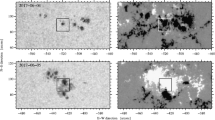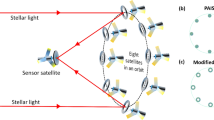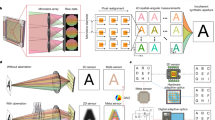Abstract
The cross-correlation of two-dimensional digital images is fundamental to solar adaptive optics computations. It can be used in a simple tip-tilt correction system to identify the relative shift between consecutive images and correlating sub-aperture images of a Shack–Hartmann wave-front sensor. The typical frequency of computation is about 1 kHz. While the software-based optimized cross-correlations may be sufficient when a small number of sub-apertures are used in a wave-front sensor, hardware-accelerated (FPGA), correlations may be required when a large number of sub-aperture images are involved, e.g., in the case of the proposed National Large Solar Telescope in India. This paper presents SolarAccel: An FPGA-based acceleration of a basic two-dimensional cross-correlation of two images. We accelerate the FPGA-based design by pipelining the individual components of the cross-correlation process. We implemented our RTL logic on a few sets of \(128\times 128\) pixel images and \(32\times 32\) pixel images on a Xilinx Zynq Ultrascale\(+\) MPSoC on the ZCU104 FPGA evaluation platform. SolarAccel performs a 2D FFT on a \(128\times 128\) image faster than existing work. The cross-correlation on a \(32\times 32\) image is also faster than the existing work. This demonstrates that FPGA acceleration is beneficial in solar adaptive optics applications.





Similar content being viewed by others
References
Babcock H. W. 1953, PASP, 65, 229
Born M., Wolf E. 1964, Principles of optics: Electromagnetic theory of propagation, interference, and diffraction of light (Oxford: Pergamon Press)
Fried D. 1965, JOSA, 55, 1427
Haji Rassouliha A., Babarenda Gamage T. P., Parker M. D., et al. 2013, IEEE, Inimage and vision computing New Zealand (IVCNZ), 28th International Conference, p. 352
Li L., Wyrwicz A. M. 2018, Rev. Sci. Instrum., 89, 093706
Roddier F. 1981, Progress in Optics, X1X, 283
Wyant J. C., Creath K. 1992, Applied Optics and Optical Engineering, XI, 11, 2
Acknowledgements
We acknowledge the initial contribution of Ms. Kirti Khandelwal and Mr. Alok Parmar. We also thank Mr. Varun Kumar for the fruitful discussions we had.
Author information
Authors and Affiliations
Corresponding author
Rights and permissions
Springer Nature or its licensor (e.g. a society or other partner) holds exclusive rights to this article under a publishing agreement with the author(s) or other rightsholder(s); author self-archiving of the accepted manuscript version of this article is solely governed by the terms of such publishing agreement and applicable law.
About this article
Cite this article
Das, S., Rao, N., Phanindra, D.V.S. et al. SolarAccel: FPGA accelerated 2D cross-correlation of digital images: Application to solar adaptive optics. J Astrophys Astron 45, 16 (2024). https://doi.org/10.1007/s12036-024-10003-1
Received:
Accepted:
Published:
DOI: https://doi.org/10.1007/s12036-024-10003-1




